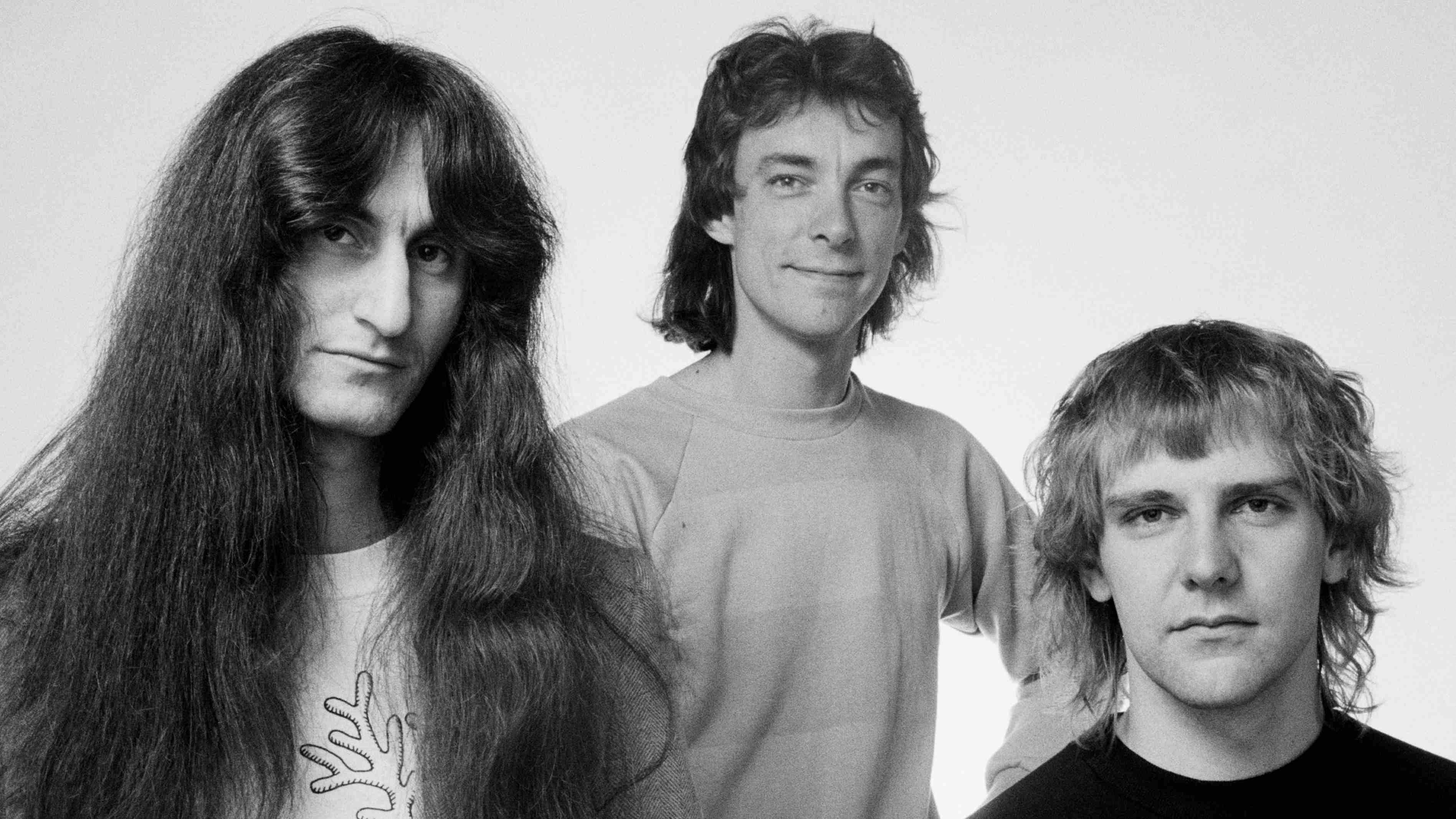The 10 greatest Dracula movies, ranked from worst to best
Dracula remains one of horror's most enduring icons. These are the essential films featuring our favourite Count

According to the Guinness Book Of World Records, Dracula has been adapted to film more than any other literary character – a whopping 538 times! And Hollywood’s still not running short of ideas. In 2023, we’re due at least two more big-screen turns from the Prince Of Darkness, with Nicolas Cage donning the cape and teeth in Renfield before August heralds the long-delayed Last Voyage Of The Demeter.
So, now’s a pretty ideal time to get up to date on the Count’s greatest cinematic misdeeds. Louder’s ranked his 10 best films in order of brilliance – and the platter includes everything from Universal standard-bearers to Adam Sandler comedies.

10. Blacula (William Crain, 1972)
Despite its ridiculous parody title, the brains behind Blacula treated their film deadly seriously. The story of Count Dracula biting an African prince and cursing him to vampirism was the first blaxploitation horror, and contains commentary on slavery that the filmmakers had to fight hard to include. Plus, lead actor William Marshall’s gravitas and baritone voice evoke the mannerisms of Christopher Lee. The score and production value are transparently cheap, but that’s no excuse to overlook this classic.
9. Hotel Transylvania (Genndy Tartakovsky, 2012)
Many saw the phrase “Adam Sandler comedy” tethered to Hotel Transylvania and, understandably, ran a mile. However, this family flick was directed by Samurai Jack creator Genndy Tartakovsky, who brought his emotive yet frenetic brand of animation to the big screen with this tale of Dracula opening his own hotel. It’s style over substance, as Peter Baynham and Robert Smigel’s writing never delivers barrels of laughs, but when the style is so damn dazzling, who cares?
8. Dracula (George Melford, 1931)
It’s one of horror’s most endearing slivers of trivia: while Universal were making Tod Browning’s iconic Dracula, the studio tried to maximise profits by giving the same sets and script to a different crew at night and filming a Spanish-language counterpart. Directed by George Melford via interpreter, this Dracula has a higher production value than its twin, although Carlos Villarías’ turn in the title role drops the charisma of Bela Lugosi and opts for some much sillier mania.
7. Dracula: Prince Of Darkness (Terence Fisher, 1966)
Hammer Studios’ third Dracula was the second with Christopher Lee and the last to be directed by Terence Fisher. Despite never being talked about as much as its 1958 predecessor, Prince Of Darkness is more gruesome and, believe it or not, truer to the novel. See the scene where Dracula has a victim drink his blood from his body, which no prior film had the guts to adapt. The Count’s resurrection at the start is practical effects perfection as well.
6. Nosferatu The Vampyre (Werner Herzog, 1979)
If anyone less than master auteur Werner Herzog were in charge, remaking the most influential horror film of all time would be idiocy. However, Nosferatu The Vampyre springboards off of the aesthetic of the original to become a classic in its own right. Klaus Kinski is deformed into the same hideousness as Count Orlok and the main setting is again Germany, yet this blossoms into its own Dracula myth thanks to the stunning cinematography and narrative twists.
The latest news, features and interviews direct to your inbox, from the global home of alternative music.
5. Shadow Of The Vampire (E. Elias Merhige, 2000)
Less a Dracula film than a film about a Dracula film, this meta-horror-comedy used the real-life ambiguity around Max Schreck to posit that the Nosferatu star really was a vampire. Willem Dafoe elevates what could have been a one-punchline joke into a fully formed character, identifying with the isolation of Dracula. And the flawless makeup only enhances his disappearance into the role. John Malkovich also excels in this send-up of the madness and dedication needed to make a movie masterpiece.
4. Bram Stoker’s Dracula (Francis Ford Coppola, 1992)
Despite being Hollywood’s most faithful adaptation of the book, Bram Stoker’s Dracula is more a love letter to the birth of cinema than to vampire lore. Francis Ford Coppola's film limits itself to purely practical effects that date back to the silent era, ironically making it look more timeless than most of the CGI extravaganzas of its day. Meanwhile, Gary Oldman and Anthony Hopkins lead a classy (and surprisingly horny) ensemble to triumph.
3. Dracula (AKA Horror Of Dracula) (Terence Fisher, 1958)
The first colour adaptation of Dracula put its vibrance to good use, shocking contemporary Britain with its bright-red bloodshed so badly that it had to be trimmed down. Admittedly, in the 2020s, this quintessential Hammer horror film is far from scandalous viewing, but it remains a must-see thanks to those spectacular sets and the chemistry between Christopher Lee and Peter Cushing. You can see why the pair went on to co-star in a host of other monster movies.
2. Nosferatu (F.W. Murnau, 1922)
In the 100 years since Nosferatu came out, almost everything has changed. But one of few constants is that Count Orlok is fucking terrifying. The vacant eyes, unflinching expression and distended fingers make Max Schreck’s bootleg Dracula as repulsive now as he was then, while the performance remains so convincingly alien that we’ve seen other films declare that the actor actually was a vampire.
Despite once being summarised as “a low-budget film made by Germans for German audiences”, Nosferatu found immortality with its simple trickery and ingenious editing. Shots like Orlok rising from his coffin without moving are nestled in the darkest depths of the uncanny valley. Then, every other character being struck by awe and fear as he smuggles his way across the ocean gives his presence the gravitas of the apocalypse.
Stoker’s estate sought to have every copy of this unofficial adaptation destroyed in the ’20s – and their failure is the rest of the world’s gain. Without this film, horror would have become a much more stylistically barren landscape.
1. Dracula (Tod Browning, 1931)
In Bram Stoker’s novel, Count Dracula doesn’t have jet-black hair. Nor is he clean-shaven or described as speaking with an Eastern European accent. These are all inventions of Tod Browning’s original Universal monster movie – and the fact that everyone still associates them with vampires says everything about the power of 1931’s Dracula.
Browning was a prolific mastermind of silent filmmaking during the 1920s and, by the time production started on his magnum opus, he was still wrapping his head around the art of “talkies”. However, it’s that insecurity that makes Dracula so eerie. It regularly falls into vast chasms of silence, interrupted only by dialogue or piercing sound effects, the lack of a score keeping every scene unpredictable.
Plus, cinematographer Karl Freund, only four years removed from engineering sci-fi touchstone Metropolis, makes every frame high art. From the tracking shot that introduces our blood-sucking baddie all the way to Van Helsing holding a hammer high above his coffin, everything would look at home in the Tate. Then there’s the crowning glory: Bela Lugosi, who hides savagery under the thinnest veneer of charm so charismatically that he’ll always be the yardstick for this role.
Admittedly, by modern standards, Dracula isn’t perfect. Those floundering bats won’t convince anybody, while some of the performances indulge in stage play overacting. However, when you look at everything it inspired – from the mainstream definition of a horror icon down to the subsequent Universal monsterverse – no one can deny that this is the nosferatu’s most mesmerising moment.
- Get your horror fix from Shudder - free 7-day trial
- Best TV and film streaming services: What’s the best bang for your buck?

Louder’s resident Gojira obsessive was still at uni when he joined the team in 2017. Since then, Matt’s become a regular in Metal Hammer and Prog, at his happiest when interviewing the most forward-thinking artists heavy music can muster. He’s got bylines in The Guardian, The Telegraph, The Independent, NME and many others, too. When he’s not writing, you’ll probably find him skydiving, scuba diving or coasteering.
